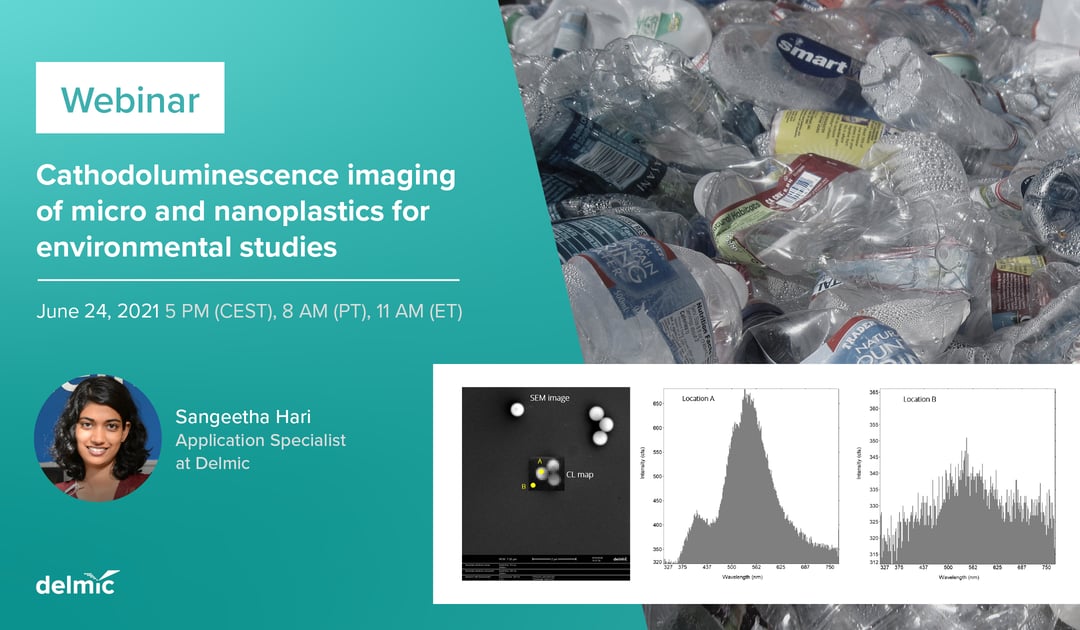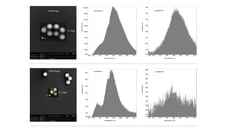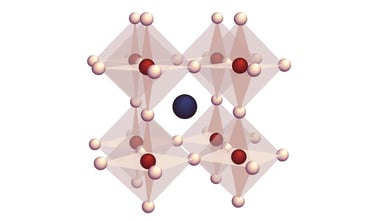Did you know that cathodoluminescence can be successfully used for environmental studies of micro and nanoplastics? Join our webinar on the 24th of June to learn more about the potential of cathodoluminescence in this field. In this webinar, our speaker Sangeetha Hari will present the possibilities of CL spectroscopy for characterising plastic nanoparticles at high resolution.

Studying and characterising plastic and polymer particles is extremely important due to their environmental impact. The health hazards presented by micro- and nanoplastic particles found in the air and water need to be investigated in order to understand the mechanism of damage to living organisms, including human beings. So far, scanning electron microscopy (SEM) and Raman microscopy are most commonly used to study the size, morphology and composition of these particles. However, these techniques are limited when it comes to performing high resolution (< 1 µm) compositional analysis or analysing mixtures.
SEM-based cathodoluminescence (CL) imaging is a versatile and powerful microscopy technique that can be used to characterise plastic nanoparticles at high resolution. With CL it is possible to scan large areas of a filter, for example, and identify the particles of interest, after which their composition can be studied using spectroscopy.
During the webinar, we will show how CL spectroscopy of sub-micron sized particles can be used on a variety of plastics like polyethylene, PVC, polypropylene, teflon, and mixtures of these materials.
.png)








